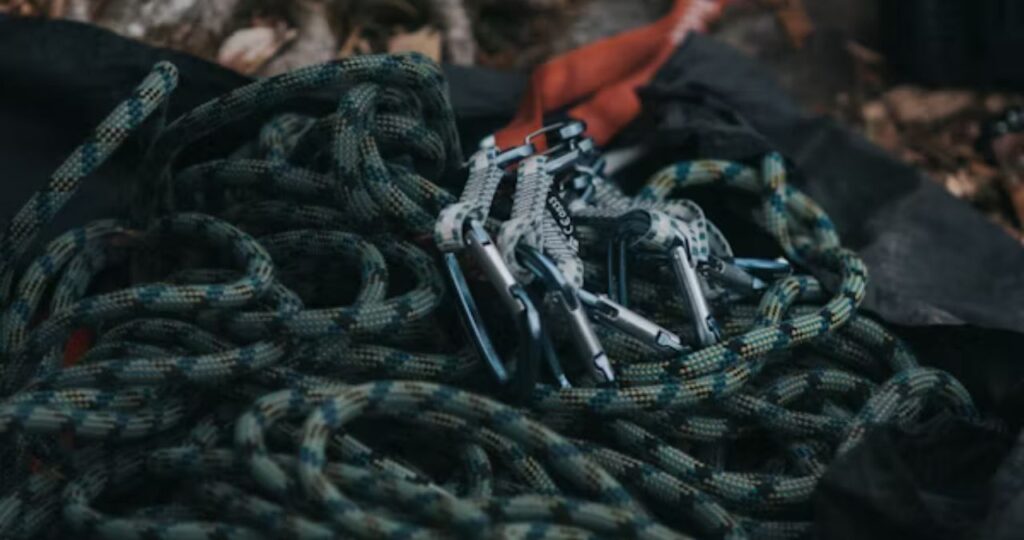Whether you’re an avid angler, a dedicated camper, or a weekend hiker, knowing how to tie the right knot can mean the difference between success and frustration. Among the lesser-known yet highly practical knots in the outdoor world is the Crock Knot. Though not as widely discussed as the bowline or the clinch knot, the Crock Knot offers exceptional utility in situations where strength, security, and simplicity are required.
In this comprehensive guide, we’ll explore what the Crock Knot is, how it works, when to use it, how to tie it correctly, and why it’s quickly gaining popularity among survivalists, fishermen, and adventurers.
What Is the Crock Knot?
The Crock Knot is a versatile and strong knot commonly used in fishing, camping, boating, and general outdoor applications. It’s known for its tight-holding strength and resistance to slippage under tension, making it ideal for securing fishing lines, lashing gear, and tying down tarps or equipment.
Although its exact origins are unclear, the knot is believed to have evolved from traditional loop-and-lock knotting techniques, adapted for modern synthetic ropes and braided fishing lines. Its design combines elements of the slip knot and locking half hitch, creating a bond that is both secure and relatively easy to untie—even after bearing heavy loads.
Key Features of the Crock Knot
-
✅ High Holding Strength: The knot holds firm under tension, even with slick monofilament or braided lines.
-
✅ Low Profile: The tight, compact structure ensures it passes through rod guides or pulleys easily.
-
✅ Multi-Use: Applicable in fishing, climbing gear attachment, camping shelters, and boating rigging.
-
✅ Easy to Untie: Despite its strength, the Crock Knot can be untied with minimal effort—ideal in dynamic environments.
How to Tie the Crock Knot (Step-by-Step)
Tying the Crock Knot requires only a few simple steps. You’ll need a length of rope, paracord, or fishing line, depending on your application.
Step 1: Form the Initial Loop
-
Start by creating a loop in the rope, leaving a 6–8 inch tail.
-
Ensure the working end crosses over the standing line.
Step 2: Pass the Tail Around the Loop
-
Wrap the tail end around the base of the loop, threading it underneath and over.
-
You should now have a loose figure-eight pattern.
Step 3: Tuck the Tail Into the Opening
-
Take the tail and tuck it through the central loop you formed earlier.
Step 4: Tighten the Knot
-
Pull on both the standing line and the tail to cinch the knot tight.
-
The wraps should grip firmly and not slip under pressure.
Tip: Wetting the line before tightening (especially for monofilament or braided fishing lines) reduces friction and prevents breakage.
When Should You Use the Crock Knot?
The Crock Knot’s blend of simplicity and strength makes it perfect for a wide range of outdoor uses:
🎣 Fishing
-
Attaching hooks, swivels, or lures to braided or fluorocarbon line
-
Securing multiple hooks in tandem rigs
-
Tying leader lines with low slippage risk
🏕️ Camping & Survival
-
Tying down tarpaulins or tents
-
Creating emergency snares or traps
-
Lashing gear to backpacks or pack animals
🚣 Boating & Marine Use
-
Quick attachment of fenders, lines, or buoys
-
Securing gear in rough waters
-
Temporary mooring lines
⛰️ Hiking & Climbing (Non-critical Loads)
-
Tying gear loops
-
Bundling rope or cords
⚠️ Note: While strong, the Crock Knot is not recommended for life-safety climbing applications where certified knots (e.g., figure-eight follow-through) are required.
Advantages of Using the Crock Knot
| Advantage | Description |
|---|---|
| Fast to Tie | Can be tied in under 10 seconds with practice |
| Minimal Slippage | Ideal for slick lines or synthetic cords |
| Compact Design | Moves through small eyelets, guides, and pulleys without jamming |
| Reliable Under Load | Maintains shape and grip when tension is applied |
| Versatile in Conditions | Performs well in wet, dry, and cold environments |
Crock Knot vs. Other Popular Knots
| Knot Type | Best Use | Strength | Ease of Tying | Ease of Untying |
|---|---|---|---|---|
| Crock Knot | Multi-purpose utility knot | ⭐⭐⭐⭐ | ⭐⭐⭐⭐ | ⭐⭐⭐⭐ |
| Clinch Knot | Fishing hook attachment | ⭐⭐⭐ | ⭐⭐⭐⭐⭐ | ⭐⭐⭐ |
| Bowline | Fixed loop for climbing/camping | ⭐⭐⭐⭐ | ⭐⭐⭐ | ⭐⭐⭐⭐ |
| Square Knot | Binding two ropes | ⭐⭐ | ⭐⭐⭐⭐⭐ | ⭐⭐⭐ |
| Double Fisherman’s | Rope joining in climbing | ⭐⭐⭐⭐⭐ | ⭐⭐ | ⭐ |
The Crock Knot balances strength, speed, and convenience, making it ideal for general-purpose outdoor use.
Common Mistakes When Tying the Crock Knot
-
Incorrect Loop Orientation: Starting the loop incorrectly can cause slippage under load.
-
Insufficient Tail Length: Leaving a short tail may cause the knot to unravel under tension.
-
Overtightening Early: The knot must be formed before tightening; pulling too soon can distort it.
-
Using with Critical Loads: Avoid using the Crock Knot in situations where life safety is involved.
Pro Tips for Mastering the Crock Knot
-
Practice with Different Materials: Try paracord, fishing line, and climbing rope to understand how the knot behaves.
-
Use Visual Aids: Keep a step-by-step diagram or video tutorial handy during early learning.
-
Integrate into Everyday Use: Try using the knot for securing grocery bags, gear bundling, or DIY projects to build muscle memory.
-
Add a Backup Hitch: For added security (e.g., in rough waters), finish the Crock Knot with a half hitch on the tag end.
Why the Crock Knot Is Gaining Popularity
In recent years, the rise of bushcraft, survivalism, and minimalist adventure sports has brought renewed interest in practical, multi-use knots. The Crock Knot meets that demand with:
-
Adaptability across multiple activities
-
High performance even with modern synthetic lines
-
Ease of learning, even for beginners
Outdoor educators, survival schools, and online communities are increasingly including the Crock Knot in their recommended knot repertoire.
Final Thoughts
The Crock Knot is a reliable, adaptable, and efficient knot that belongs in every outdoor enthusiast’s toolkit. Whether you’re rigging a line for fishing, securing a tarp against the wind, or bundling supplies in the backcountry, this knot delivers solid performance without requiring complex skills or specialized tools.






